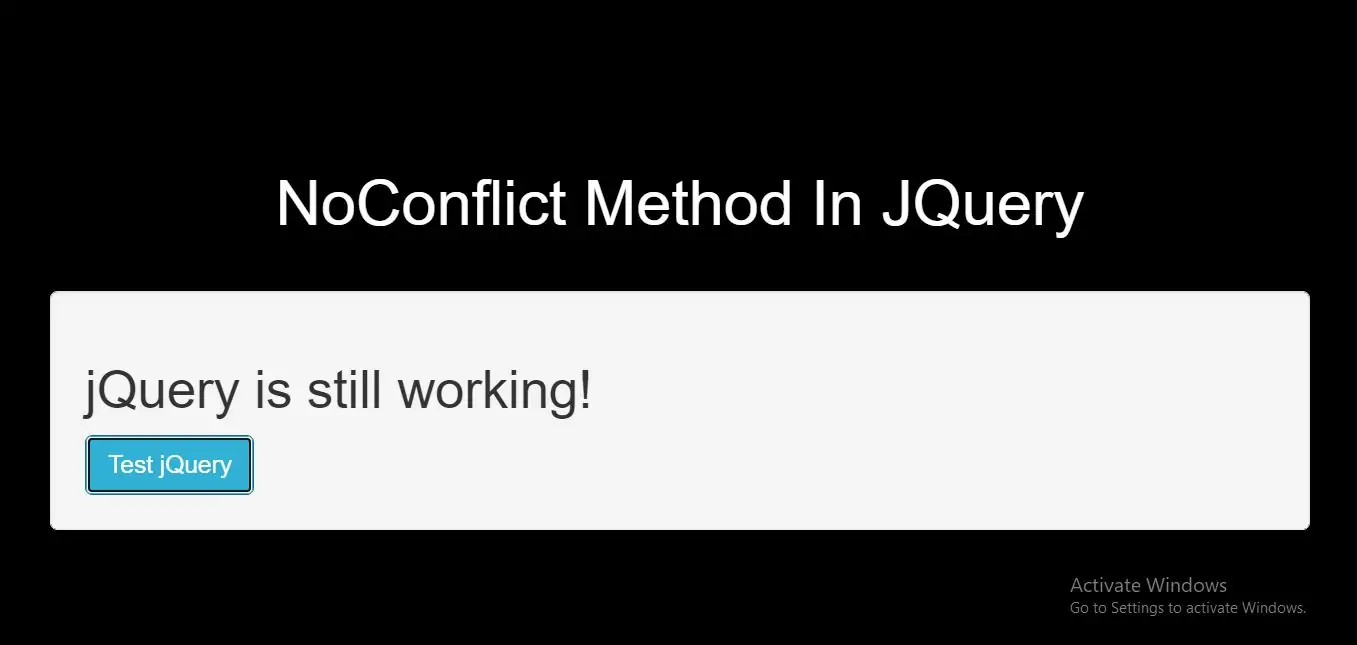
You can of course still use jQuery, simply by writing the full name instead of the shortcut:
Example(1)
<script>
$.noConflict();
jQuery(document).ready(function(){
jQuery("button").click(function(){
jQuery("p").text("jQuery is still working!");
});
});
</script>
noConflict() method returns a reference to jQuery, that you can save in a variable, for later use. Here is an example:
<script>
var jq = $.noConflict();
jq(document).ready(function(){
jq("button").click(function(){
jq("p").text("jQuery is still working!");
});
});
</script>
$ shortcut and you do not want to change it all, you can pass the $ sign in as a parameter to the ready method. This allows you to access jQuery using $, inside this function - outside of it, you will have to use "jQuery":
$.noConflict();
jQuery(document).ready(function($){
$("button").click(function(){
$("p").text("jQuery is still working!");
});
});
<!DOCTYPE html>
<html>
<head>
<title>How To Use NoConflict Method In JQuery With Example</title>
<meta charset="utf-8">
<meta name="viewport" content="width=device-width, initial-scale=1">
<link rel="stylesheet" href="https://maxcdn.bootstrapcdn.com/bootstrap/3.4.1/css/bootstrap.min.css">
<script src="https://ajax.googleapis.com/ajax/libs/jquery/3.5.1/jquery.min.js"></script>
</head>
<style>
body {
background: black;
}
</style>
<body>
<div class="container">
<br><br><br><br>
<div class="text-center">
<h2 id="color" style="color: White;">NoConflict Method In JQuery</h2>
</div>
<br>
<div class="well">
<h2>This is a paragraph.</h2>
<button class="btn btn-info">Test jQuery</button>
</div>
</div>
</body>
</html>
<script>
$.noConflict();
jQuery(document).ready(function($){
$("button").click(function(){
$("h2").text("jQuery is still working!");
});
});
</script>